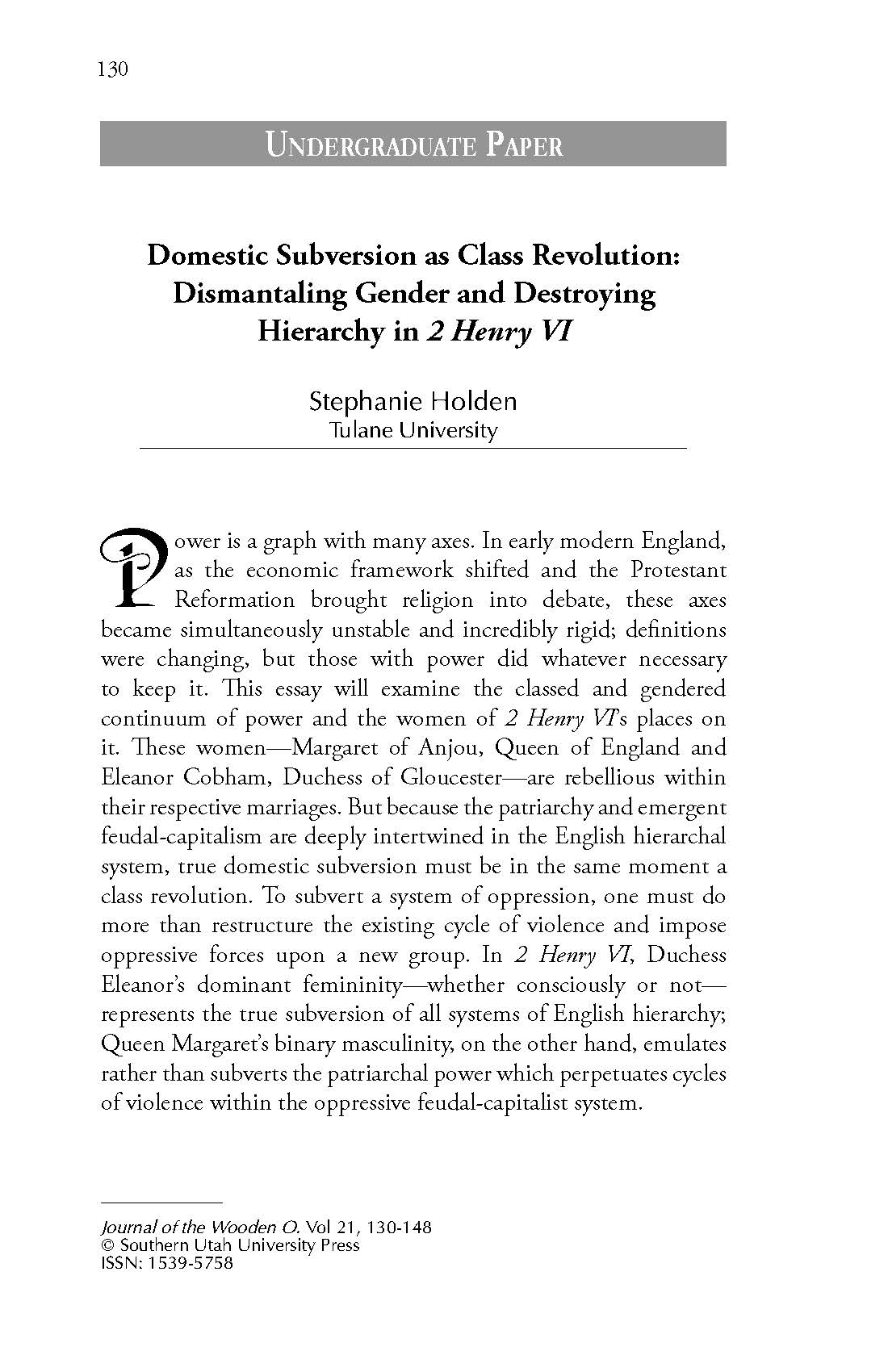Domestic Subversion as Class Revolution Dismantling Gender and Destroying Hierarchy in 2 Henry VI
Main Article Content
Abstract
Power is a graph with many axes. In early modern England, as the economic framework shifted and the Protestant Reformation brought religion into debate, these axes became simultaneously unstable and incredibly rigid; definitions were changing, but those with power did whatever necessary to keep it. This essay will examine the classed and gendered continuum of power and the women of 2 Henry VI’s places on it. These women—Margaret of Anjou, Queen of England and Eleanor Cobham, Duchess of Gloucester—are rebellious within their respective marriages. But because the patriarchy and emergent feudal-capitalism are deeply intertwined in the English hierarchal system, true domestic subversion must be in the same moment a class revolution. To subvert a system of oppression, one must do more than restructure the existing cycle of violence and impose oppressive forces upon a new group. In 2 Henry VI, Duchess Eleanor’s dominant femininity—whether consciously or not—represents the true subversion of all systems of English hierarchy; Queen Margaret’s binary masculinity, on the other hand, emulates rather than subverts the patriarchal power which perpetuates cycles of violence within the oppressive feudal-capitalist system.
